The Sierra Nevada Conservancy’s (SNC) annual Watershed Improvement Program Summit held Friday, March 8, marked the 20th anniversary of the state agency and highlighted the many accomplishments, people, projects, and events that have helped shape the Sierra-Cascade over the past two decades.
The Sierra Nevada Conservancy’s keystone initiative, the Watershed Improvement Program (WIP), looks to restore resilience to forests and rural communities, support sustainable recreation and tourism, and conserve natural and working lands. Through the work of close-knit local and regional partnerships and knowledge, the WIP is being applied throughout the Sierra-Cascade.
Since its inception, the SNC has invested nearly $220 million to 589 projects throughout the Sierra-Cascade to support the environment and economy of the rural region. As stated by SNC’s Governing Board Chair, Terry O’Brien: “The success that the conservancy has had has been a shared success, and has depended on working collaboratively with all of the region’s stakeholders.”
Angela Avery, the executive officer of the SNC, opened the Summit by stressing the importance of these collaborations, noting that “we are all better together.” This sentiment obviously resonates across the Sierra-Cascade—as it was echoed throughout the auditorium all day.
California Natural Resources Secretary, Wade Crowfoot, provided the keynote address reflecting on his love for the region, and how the Sierra Nevada Conservancy’s work has benefited all Californians.
“The Sierra Nevada Conservancy has accomplished special things over the last couple of decades. To me the impact is clear, the on-the-ground impact,” said Crowfoot. “The Watershed Improvement work is actually a model for the state. The idea that large landscape-level improvements can happen, planned in partnerships with communities, creating local jobs, addressing local priorities, has been observed by me and expanded throughout the state.”
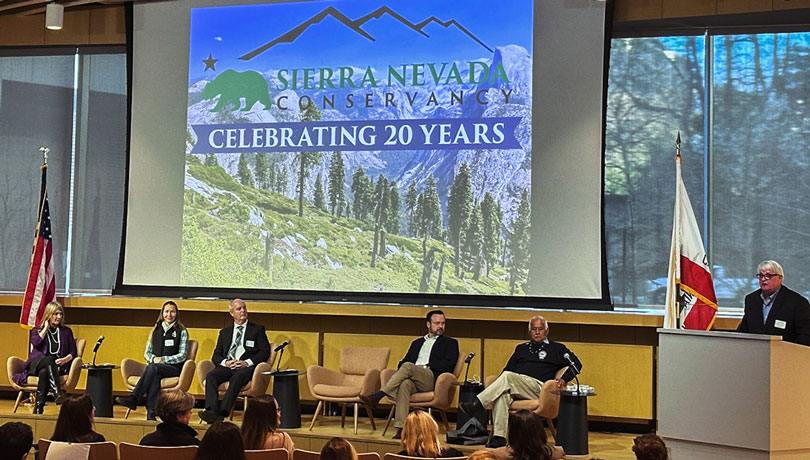
Sierra-Cascade success stories
With a focus on the impact the Sierra Nevada Conservancy and its partners have made since its founding in 2004, California policymakers and the public heard directly from leaders of local government, nonprofits, and tribal organizations who are spearheading critical, on-the-ground projects protecting and restoring Sierra-Cascade landscapes and communities.
Andy Fecko of the Placer County Water Agency reiterated Avery’s statement about the importance of partnerships and getting critical work done at the landscape scale through what the French Meadows Partnership is doing to restore 20,000 acres near a critical water supply source in the Central Sierra. This effort, spearheaded by the Placer County Water Agency, Tahoe National Forest, Sierra Nevada Conservancy, Nature Conservancy, and others, was one of the first to launch work at this scale in the Sierra-Cascade – a model some are now following and more eager to adopt.
“There is no end to the amount of partnerships that are needed,” said Andrew Fecko, Placer County Water Agency General Manager. “And SNC’s 589 projects show that. There are a lot of places in the state that don’t have a County of Placer or a PCWA to be able to have the capital, both the human intellectual and financial capital, to launch these needed things and those are the spaces that the SNC can really help with.”
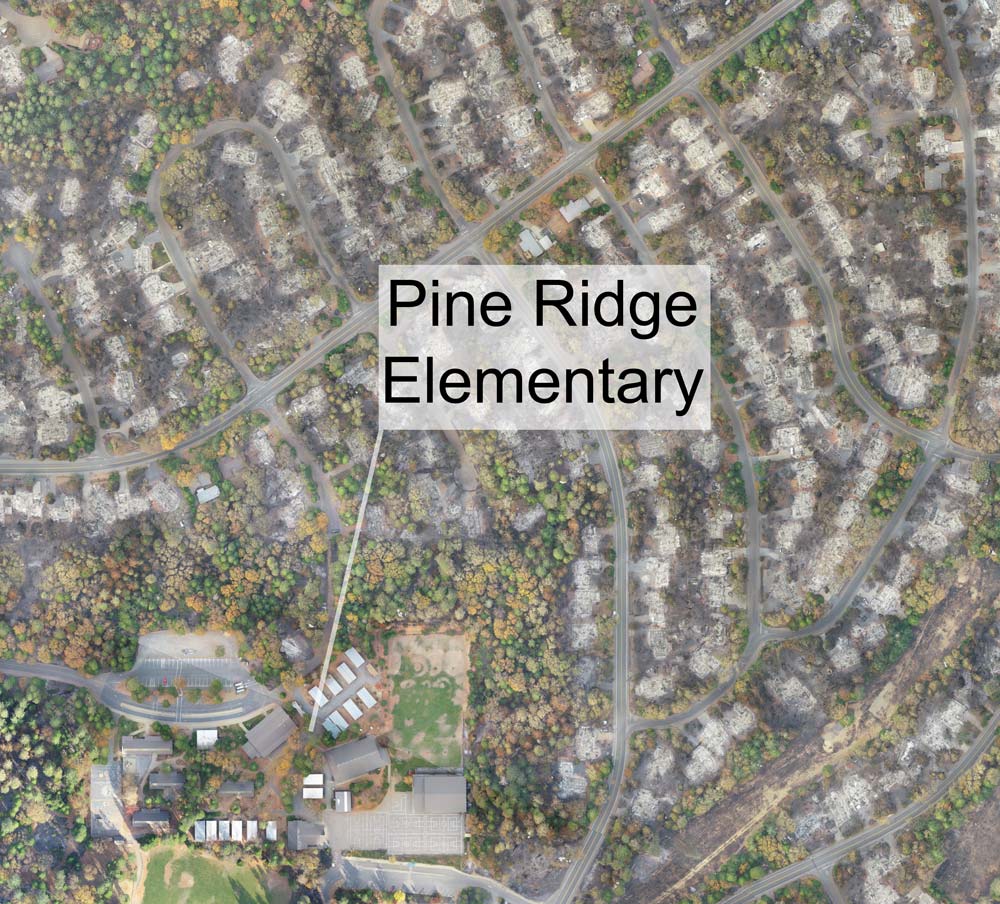
Callie-Jane West, Executive Advisor to the Butte County Fire Safe Council highlighted how essential SNC-funded forest-health and community-protection projects helped save the neighborhood of Fir Haven and Pine Ridge School from the 2018 Camp Fire. “We lost three public schools and have more to protect. It’s really devastating when your community doesn’t have a school,” she said. “The forest around (Pine Ridge) was really overgrown. We were able to go in with foresters’ assistance, CAL FIRE, and SNC funding and do some general treatments that addressed the overstock conditions.”
A Butte County supervisor, former SNC boardmember, and current member of California’s Wildfire and Forest Resilience Task Force, Doug Teeter concurred with West. A resident of Paradise, CA, who lost his home to the 2018 Camp Fire, Teeter knows first-hand the importance of treating the dense, overstocked forested landscape. Living in a rural community, he also knows finding ways to boost recreation and tourism are keys to helping residents in the Sierra foothills.
“The SNC doles out a lot of money for forest-health and watershed projects, which I think is super awesome. But our social-economic needs, needs to have trails to draw tourism,” Teeter said, highlighting the significance of an SNC-funded planning project for a 40-mile trail network adjacent to Colby Mountain outside the town of Jonesville.
Robert Gomez, Chairman of the Tübatulabal Tribe, offered his gratitude for a grant from the SNC and Wildlife Conservation Board that led to the return of key ancestral lands east of Bakersfield.
“In Indian Country, the Great White Father has not been kind to us over the years. Yet, the people on the ground? You people have been good to us and gracious to us,” he said. “We have what we call Kolo kam’ap, which means Duck Place. Thanks to the generosity of the conservancies, we have Kolo kam’ap back.”
Gomez added that after a recent ceremony to commemorate the return of ownership, a tribal elder came up to him and said: “I feel that I don’t have to go home anymore, because I am home.”
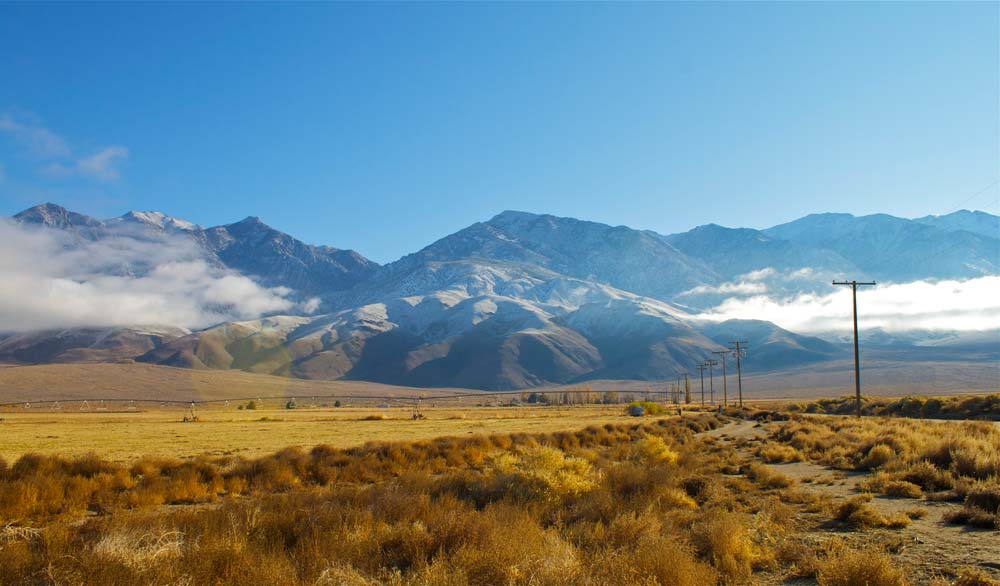
Highlighting the work on the east side of the Sierra and the investment of funds to protect working lands and critical wildlife corridors were not lost either in the WIP discussion.
“We all know that early funding in projects is critical. We can have the vision, we can have the plan, but without early funding to help us, we flounder in the water,” emphasized Kay Ogden, executive director with the Eastern Sierra Land Trust. “The SNC funded the Eastern Sierra Land Trust at some very critical pivot points.”
This funding allowed the Eastern Sierra Land Trust to invest in conservation easements, like the SNC-supported Cinnamon Ranch. That easement has resulted in the creation of two additional businesses, a bookstore ice cream shop in Bishop, and a water conservation consulting group that serves the Owens Valley.
The long view in the Sierra-Cascade
The second panel of the day included leaders in the region focused on successfully tackling emerging issues from workforce capacity and restoring forests at the landscape scale to prevent, and recover from, megafires, to partnering with California tribes and increasing access to nature for people of color.
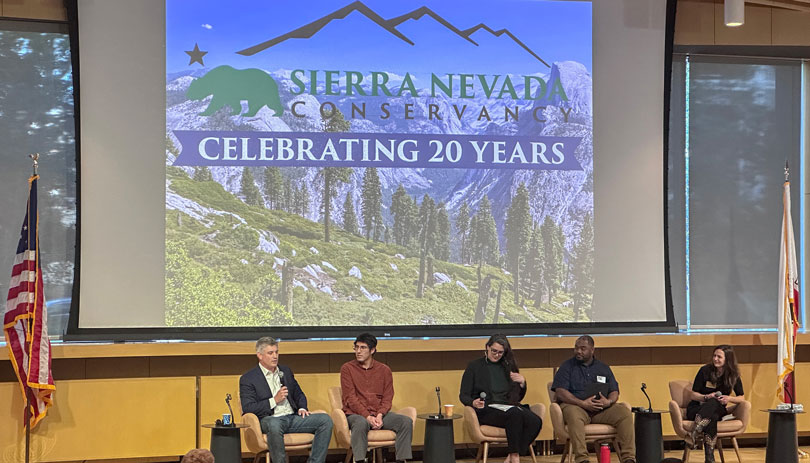
Luis Vidal, the forest restoration manager at American Forests, got his start in conservation through the SNC-funded Sierra Corps Forestry Fellowship, and is now leading efforts to reforest lands impacted by the 2014 high-severity King Fire. He is bringing cutting-edge science regarding reforestation to bear; ones that reflect the rapidly changing climate and systems of the 21st Century.
As he put it: “Wildfires aren’t solely focusing on small areas, they are affecting hundreds of thousands of acres. So, these solutions have to become at the landscape level focus. And they need to be diverse, so they have the built-in resilience to the challenges of the future.”
Getting this done is at the heart of the WIP and the Landscape Investment Strategy. And getting it done faster is the core mission of Blue Forest, a nonprofit conservation finance organization. Co-founder Zach Knight explained how private finance unlocks a variety of benefits from the ability to work with smaller, local contractors to frontloading work so critical projects can begin as soon as possible. Blue Forest is working with the North Yuba Forest Partnership to accelerate implementation on a 275,000-acre landscape-scale effort and just announced a third partnership with the Upper Mokelumne Watershed Authority that will kick-off shortly.
This new financial opportunity, according to Knight, may never have started if not for the SNC.
“The SNC was actually our first state agency we partnered with, and I don’t think we would have been successful as Blue Forest and pushing for this model called the Forest Resilience Bond if SNC hadn’t pulled a meeting together and said we think this will work on the Tahoe National Forest,” Knight explained. “We would never have known any of that if not for the SNC. It’s been a wonderful journey for us.”
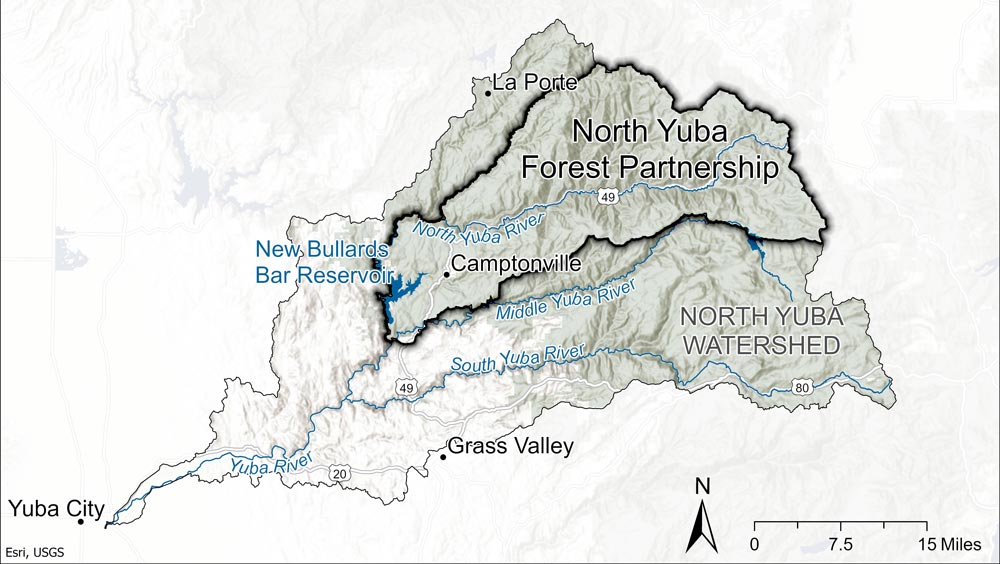
Stewarding the Sierra-Cascade, obviously, is about more than simply landscape-scale forestry work, it’s also about the work to restore access and ownership to lands taken from California’s indigenous tribes and historically denied to people of color due systemic racism.
Geneva Thompson, California Deputy Natural Resources Secretary for Tribal Affairs, discussed the importance of tribal stewardship, and praised SNC’s efforts, including funding multiple land-back conservation purchases, adding internal tribal affairs capacity, and embracing best practices in regards to notification and consultation.
“Native Americans have been stewarding these lands since time immemorial and have deep place-based practices, management strategies, structures that the landscapes, natural resources, the plants, the animals, all those beautiful creatures that evolved with tribal stewardship,” stated Thompson. “And through their forced removal and disruption, we are now having a reality where our forests are having those megafires, where our natural resources are suffering and are not ready for the climate crisis that we are facing. And so, by shifting how we do business in the state opens up opportunities implementing those place-based knowledges, cultural practices, management practices we so desperately need. The SNC has done a lot of work trying to advance all of those key priorities.”
While restoring forest health and resilience is a top priority amid a changing climate, so, too, is helping more Californians, especially lower income people of color from urban areas, get outside and enjoy the vast benefits of nature, which Blake Milton, secretary/treasurer of the first and only black-led land conservancy in California eloquently stated.
“What we are trying to do is create a new system of thought that would create more opportunities for people of color to feel comfortable in nature again,” said Milton of the 40-Acre League. The organization has big plans for the land and hopes having a welcoming outdoor space will be transformational to people of color. “We are going to start taking youth groups to this new property,” Milton added. “How can we put you in a place that is no longer your school taking you out to nature, but the desire of your family.”
Twenty years later, SNC and partners still going strong
The SNC was created in 2004 to establish funding for environmental preservation while providing support for economic sustainability across the 25-million-acre service area. Last year, California’s Cascade and Klamath mountains were added to that area, making the total roughly 27 million acres.
Locally significant projects supported by SNC over the last 20 years, such as those showcased at the 2024 WIP Summit, have gained SNC and the Region new champions and advocates along the way.
Like many living in the Sierra-Cascade, Teeter was initially skeptical of the value that a regionally focused state conservancy could bring to such a varied landscape. “I came in thinking they were going to tell me what to do with my land and I’m now one of the biggest advocates of the Sierra Nevada Conservancy,” he concluded.
At the time of the historic signing of the legislation that created the SNC, bill co-sponsor Tim Leslie said: “Not only will the Sierra now receive much needed funds for important projects, but local residents will finally have a seat at the table in shaping the destiny of their communities and the Region.”
Two decades later, during a special address at this year’s special WIP Summit, the other bill co-sponsor, John Laird, reiterated that poignant remark.
“The question now is, does it (SNC) live up to the vision that we had? And it certainly does,” he said with conviction. “Because we were really looking to have local officials in the Sierra have a seat at the table, and they do. Now there is a plan, there’s a path, people are around the table to do it. It is everything that I think I dreamed that the Sierra Nevada Conservancy could be.”

